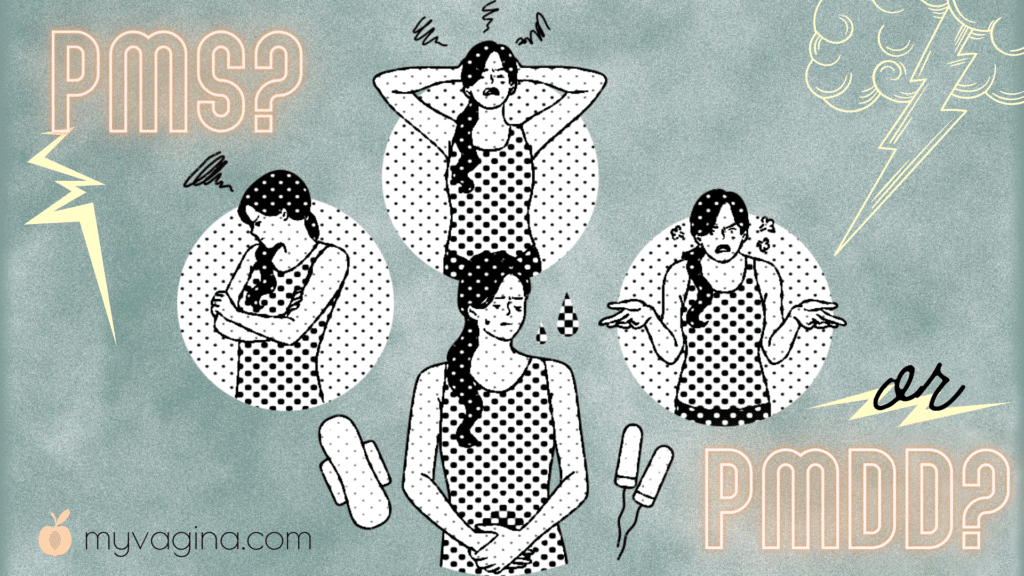The difference between premenstrual syndrome (PMS) and premenstrual dysphoric disorder (PMDD) is in the clinical manifestation of the symptoms. That is, how long and how bad. Read more about PMS and PMDD here.
Basic questionnaire to see if you may have the more severe diagnosis of PMDD
#1. In the 7-10 days before your period is due, do you experience:
- Irritability
- Tiredness
- Tension
- Sensitivity
- Sadness
- Bloating
- Breast tenderness
- Food cravings
- Feelings of being overwhelmed
- Sudden mood changes for no reason
#2. Do these symptoms cause problems in your:
- Work
- Social life
- School
- Relationships (partner, family, friends)
#3. Do these symptoms disappear soon after your period starts?
- Yes
- No
If many of the answers were yes, you may have PMDD, however you’ll need to discuss this with your doctor to determine a correct diagnosis.
Characteristics of PMDD compared to PMS
- PMDD is mostly mood-related symptoms, whereas PMS is often quite physical
- PMDD affects relationships and everyday activities, where as PMS doesn’t (as unpleasant as it may be)
- PMDD affects the premenstrual phase for at least two consecutive cycles, whereas PMS is the premenstrual phase only and can come and go
- PMDD is much less common, affecting up to five per cent of women who get their periods, whereas PMS affects up to half of all menstruating women
Diagnosing PMDD
To be diagnosed with PMDD, you must have five or more of these symptoms that are present most of the time during each episode/cycle, and at least one of them must be severely depressed mood, tension, mood swings or irritability.
- Depressed mood
- Tension
- Mood swings
- Irritability
- Decreased interest in usual activities
- Lack of energy
- Insomnia or hypersomnia (sleepy)
- Physical symptoms – bloating, breast tenderness
- Difficulty concentrating
- Change in appetite
- Feeling overwhelmed
If you believe you fall into the category of PMDD, there are many options for treatment, with most generally being non-drug and based around improving your overall body function and hormone interactions.
Treating PMS or PMDD
See your healthcare practitioner for a diagnosis and treatment.
One of our favourite evidence-based treatment for PMS and PMDD is Premular.






